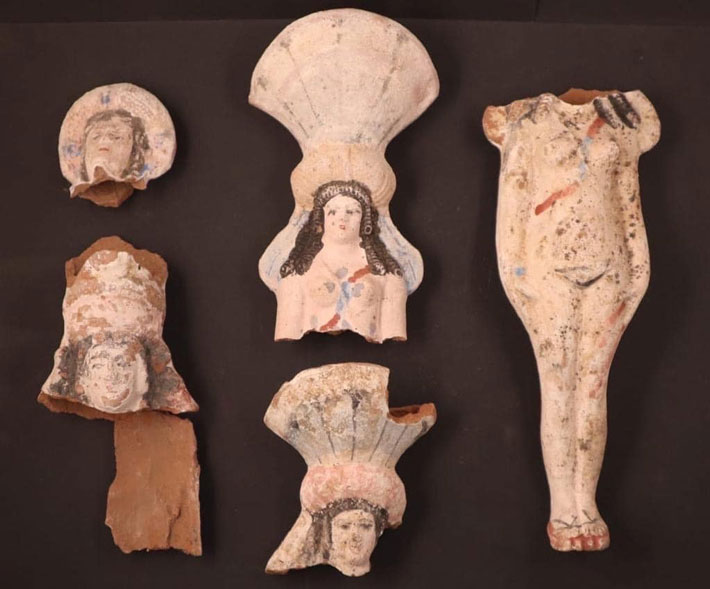 AL BAHNASA, EGYPT—A series of rock-cut tombs has been discovered in Upper Egypt by a team of researchers from the University of Barcelona and the Institute of the Ancient Near East, according to an Ahram Online report. Mostafa Waziri of the Supreme Council of Antiquities said that the tombs have been dated to the Ptolemaic (304–30 B.C.) and the Roman (30 B.C.–A.D. 641) periods. Terracotta statues depicting the goddess Isis-Aphrodite wearing a foliage crown were found in the tombs. Some of the Roman-era mummies were equipped with gilded and colored funeral masks, while golden tongues had been placed in the mouths of two of them. “The team discovered parts of a ruined structure adorned with captivating drawings depicting intricate details of plants, grapevines, and various animals, providing valuable insights into the daily life and cultural significance of Al Bahnasa during ancient times,” added Adel Okasah of the Central Administration Department for Middle Egypt Antiquities. To read about a Ptolemaic temple of Isis on the island of Philae, go to "When Isis Was Queen."
AL BAHNASA, EGYPT—A series of rock-cut tombs has been discovered in Upper Egypt by a team of researchers from the University of Barcelona and the Institute of the Ancient Near East, according to an Ahram Online report. Mostafa Waziri of the Supreme Council of Antiquities said that the tombs have been dated to the Ptolemaic (304–30 B.C.) and the Roman (30 B.C.–A.D. 641) periods. Terracotta statues depicting the goddess Isis-Aphrodite wearing a foliage crown were found in the tombs. Some of the Roman-era mummies were equipped with gilded and colored funeral masks, while golden tongues had been placed in the mouths of two of them. “The team discovered parts of a ruined structure adorned with captivating drawings depicting intricate details of plants, grapevines, and various animals, providing valuable insights into the daily life and cultural significance of Al Bahnasa during ancient times,” added Adel Okasah of the Central Administration Department for Middle Egypt Antiquities. To read about a Ptolemaic temple of Isis on the island of Philae, go to "When Isis Was Queen."
Rock-Cut Tombs Discovered in Upper Egypt
